Museums & Institutions
‘A Balance Between Wonder and Humility’: 25 Leading Architects Imagine How Future Museums Will Look in a Post-Starchitecture World
Read an excerpt from the new book 'Imagining the Future Museum: 21 Dialogues With Architects.'
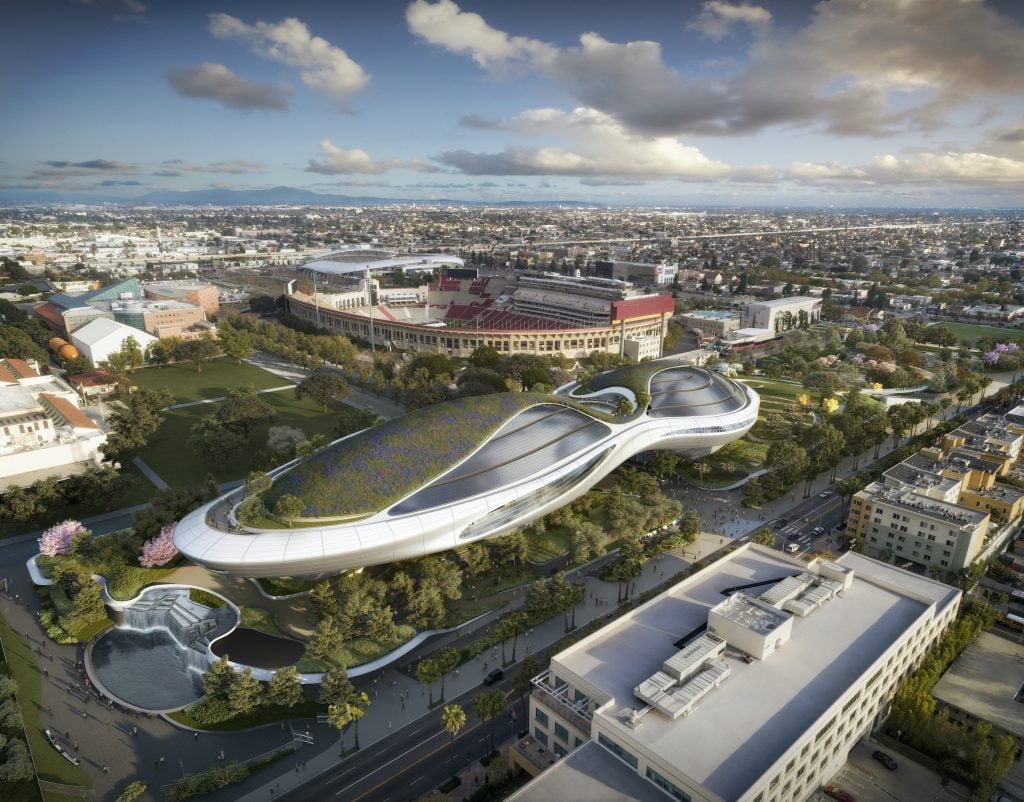
Read an excerpt from the new book 'Imagining the Future Museum: 21 Dialogues With Architects.'

András Szántó

Two years ago, in 2020, in the depths of the Covid-19 pandemic, I sat down with art-museum directors to talk about how museums were evolving. The conversations, which were gathered in The Future of the Museum: 28 Dialogues, described how museums were adapting to a changing society. They were, in a sense, running on new software—becoming more open, inclusive, welcoming, participatory, technologically savvy, community-minded, and globally engaged.
But a museum that runs on new software will need new hardware. Which is why I spent the spring and summer of 2022 talking with architects from around the world.
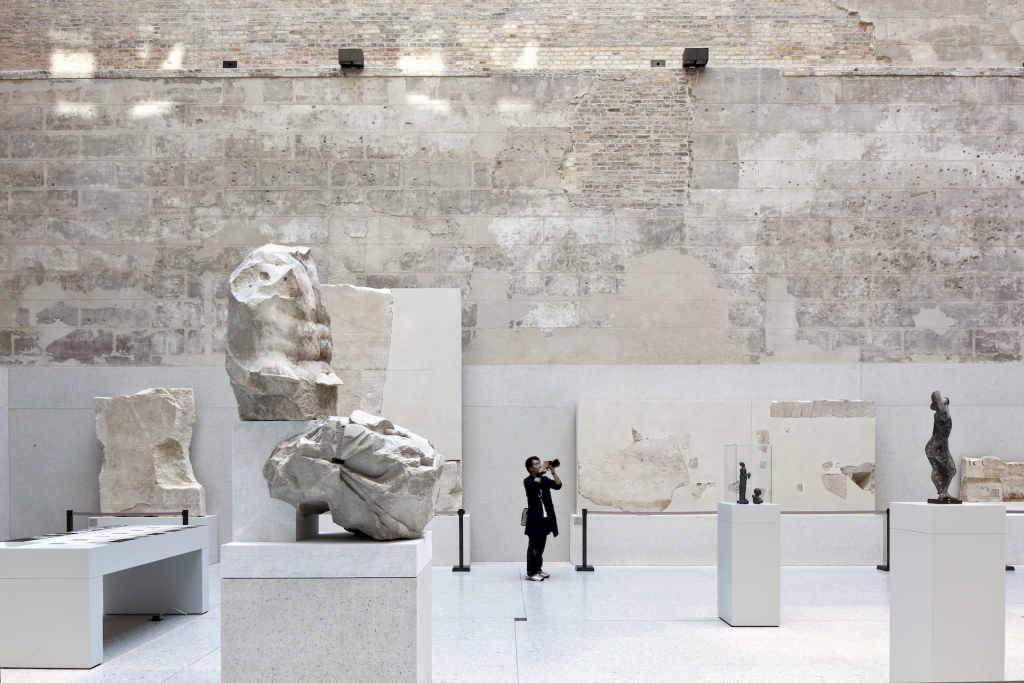
Neues Museum, Berlin. Photo © SMB / Ute Zscharnt for David Chipperfield Architects.
If you are like me, you grew up with museums that were rather grand and imposing, radiating institutional authority—with architecture to match. More than a few looked like Greek temples, suggesting a cultural link that felt fabricated and overbearing, even to me, a European.
Gaining entrance called for a sacrifice. One had to ascend a hill or flights of steps just to get to the front door. Inside, guards watched every move. Viewing art consisted of walking silently in lockstep from one work to another, gazing, as if through a series of framed windows, into the sublime realm of aesthetics—the just reward for the sacrifice.
Even as museums moved into more contemporary structures in the 20th century, they retained a sober-minded architectural austerity, now presented with a palette of raw concrete and hard-edged minimalism. Galleries—stripped back to nothing more than four white walls—were reserved strictly for encounters with art. These reverential white cubes reinforced the cultural norm of separating art and life—a vestige of sacral architecture in the art museum.
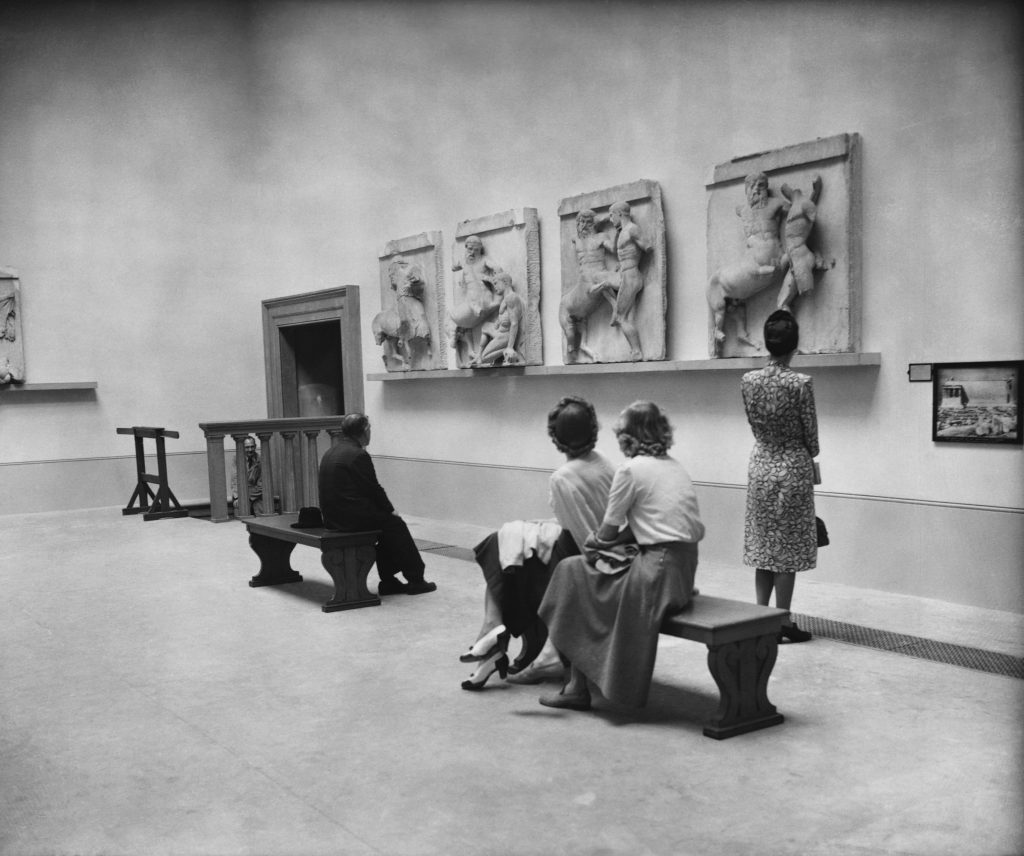
Visitors at the British Museum in London. Photo by © Hulton-Deutsch Collection/CORBIS/Corbis via Getty Images.
When tired, the visitor found few places to rest. Benches were made of hard wood or blocks of stone. Amenities were spartan. Any green space around the museum was an afterthought. The message was clear: Culture was meant to be taken seriously; it was all work and no play.
Matters took a turn as art museums gradually shed their rarified air of exclusivity and started measuring their success by the size of their audiences. Correspondingly, museums underwent an architectural costume change as well.
As far back as 1934, the Brooklyn Museum made a symbolic decision to remove the grand staircase leading up to the entrance of its imposing neoclassical McKim, Meade and White building, to make the museum feel more “democratic.” Many high-temple museums would follow suit. The turbulent 1960s created a new impetus toward cultural democracy, with Paris paving the way. By 1977, the radical, inside-out Centre Georges Pompidou had opened, pointedly declaring that we no longer needed a boundary between the museum and the street. Seven years later, I.M. Pei’s glass pyramid landed in the courtyard of the Louvre. The museum now not only beckoned everyone. It was an event.
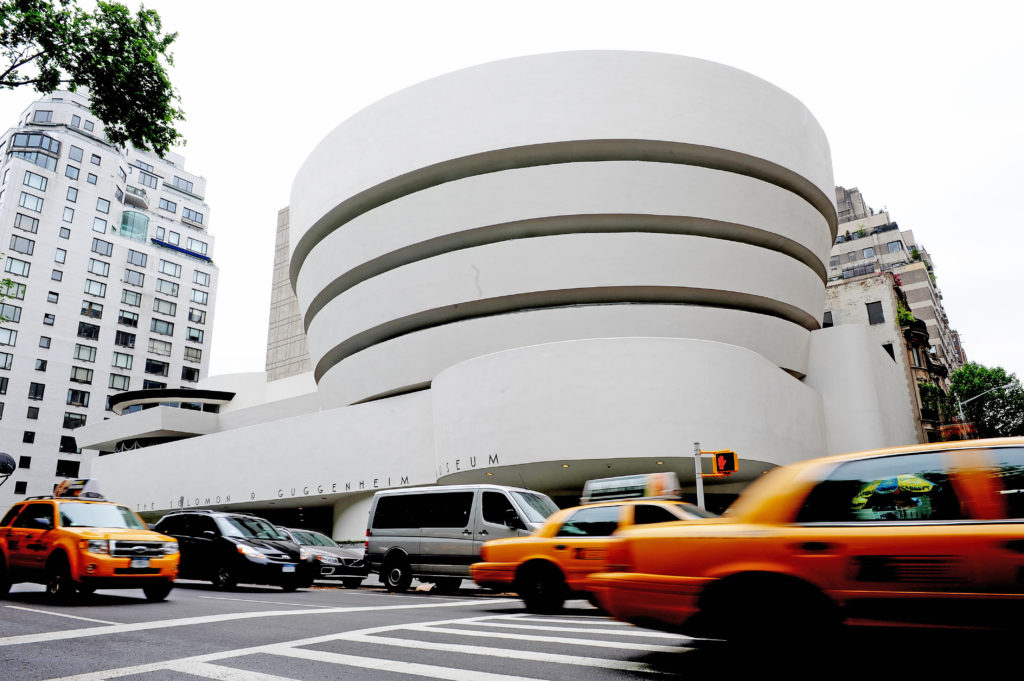
The Guggenheim Museum in New York. Photo credit: STAN HONDA/AFP/Getty Images.
In the latter years of the 20th century, museum architecture went into overdrive. A period of flamboyant design took hold. It reached its apex in 1997 with Frank Gehry’s breathtaking titanium-clad Guggenheim Bilbao. The structure was justly celebrated for putting its host city on the map. Yet it was, along with other museums that followed in a similar vein, a work of art in its own right, outshining its contents, elbowing for attention in the urban landscape. Not since the 1959 opening of Frank Lloyd Wright’s New York Guggenheim, with its bright white attention-grabbing corkscrew on Fifth Avenue, had people flocked to a museum first and foremost for its architecture.
The formula of commissioning iconic museum buildings from brand-name architects turned out to be a winning one for cities and urban developments in need of cultural anchoring. With China and the Gulf petro-states fueling a museum-building boom in the new millennium, the era of “starchitecture” turned out stunning structures that functioned as magnets for tourists and emblems of the modernity of their nations.
This expressive approach to museum design, however, has produced mixed results. For all intents and purposes, it substituted one language of authority with another, only marginally less intimidating one. Instead of Corinthian columns, we got shimmering glass. Italian marble gave way to rare metals. Whereas Greek temples and travertine-coated modernist citadels had signified fading cultural hierarchies, these new architectural spectaculars came across in the eyes of many as avatars of the neoliberal order and its stubbornly entrenched chasms of inequity.
Exuberant, supremely confident architecture did help prop up the appeal of museums
when other “high” art forms were floundering. But the museum as a work of art was not always kind to the works of art themselves. More concerning still, many people came to feel that these alluring structures were not intended for them. Of course, starchitecture was not the only sort of museum design being produced in the 1990s and the early 2000s. Generations of architects had struggled to reconcile the tension between the democratic and the elitist impulses of the art museum. Nonetheless, a realization gradually dawned that the very stratagems intended to lure people into art museums were keeping a substantial portion of the public away.
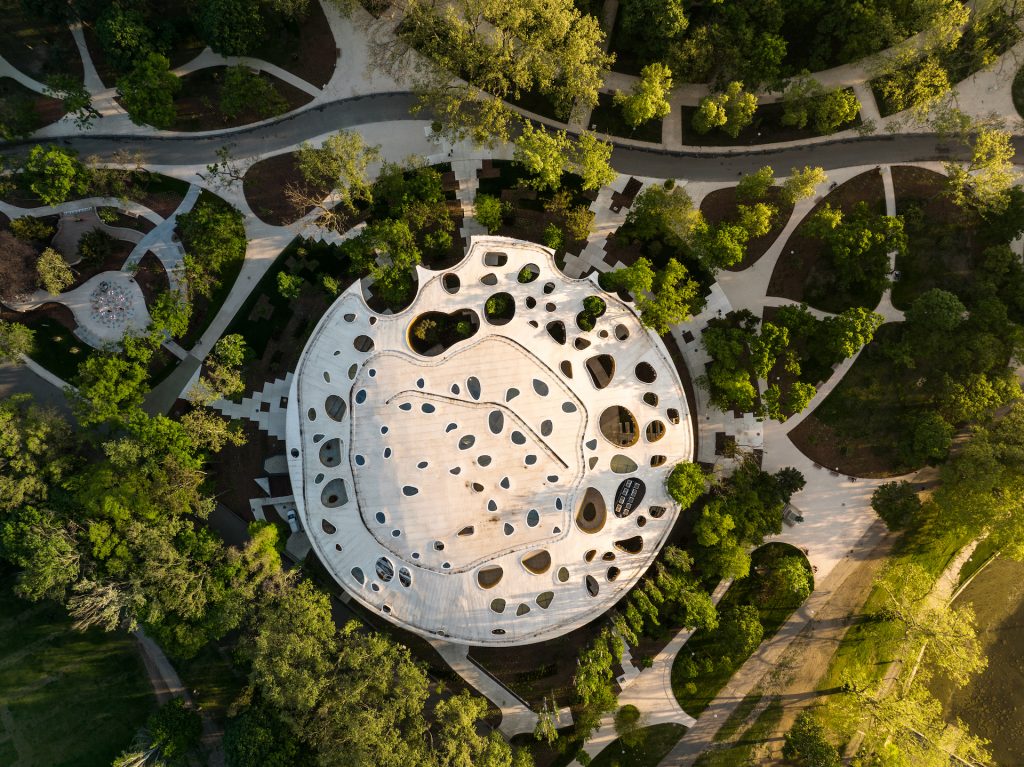
House of Music, Hungary, Budapest, designed by Sou Fujimoto Architects. Photo by György Palkó, © LIGET BUDAPEST.
Just as a generation of museum leaders was seeking to open the museum up to a larger, more inclusive audience, a generation of architects was starting to move beyond look-at-me statements and imagining more welcoming and accessible museums, ones that are intentionally rooted in their communities and urban or natural surroundings. The art of architecture, embracing as it does so many other arts, was aligning with new attitudes in the art world. Even architects who had designed their share of iconic museums pivoted toward more restrained and embedded solutions. These days, it is widely assumed in the field the era of museum starchitecture is over.
“The pendulum is swinging,” one of the architects noted during our conversation. “Good architecture does not have to be expensive or superficially spectacular,” said another. “I don’t really care for the beauty pageant of ‘look at me’ museum design,” allowed a third. The comments stressed that “we should try to avoid this iconic and monumental architecture” and “it is no longer enough to produce space just for the sake of awe.” The architects expressed disdain for buildings that were “showing off,” a mere “attraction,” or worse, a “distraction” to paper over the museum’s entanglements in the legacies of colonialism and racism.
Architects today are looking for “better ways to do architecture,” a pivot to “un-monumentality” that emphasizes “human interactions” over shiny structures. “It doesn’t mean these buildings weren’t absolutely astonishing,” said one of them of the starchitecture period, “but there has been a shift in the last generation.”
In short, museum architecture, no less than the museum itself, is at a pivot point. Architects are realigning intents and methods, building on the achievements of the past to create inclusive cultural spaces that can meet the moment. In the grand sweep of things, museum architecture is moving away from the design conventions of the museum as a secular church, yet still aspiring to convey its relevance in a language that is not so sacral or hierarchical.
One way or another, these architects are working to strike a fruitful balance between wonder and humility. They want to create structures that insist on the vitality of the museum as a uniquely necessary civic institution in the service of art and society, while at the same time accommodating all segments of the public. At its best, this new museum architecture acts as a partner to the emerging 21st-century museology.
What, then, might the future museum be like, not only as an institutional construct, but as a tangible structure and place?
The answer belongs to the architects, 25 of whom sat with me from March through September 2022 to think about the future museum. I am neither an architecture critic nor a historian. I was seeking to document the prevailing consensus, if there was one.
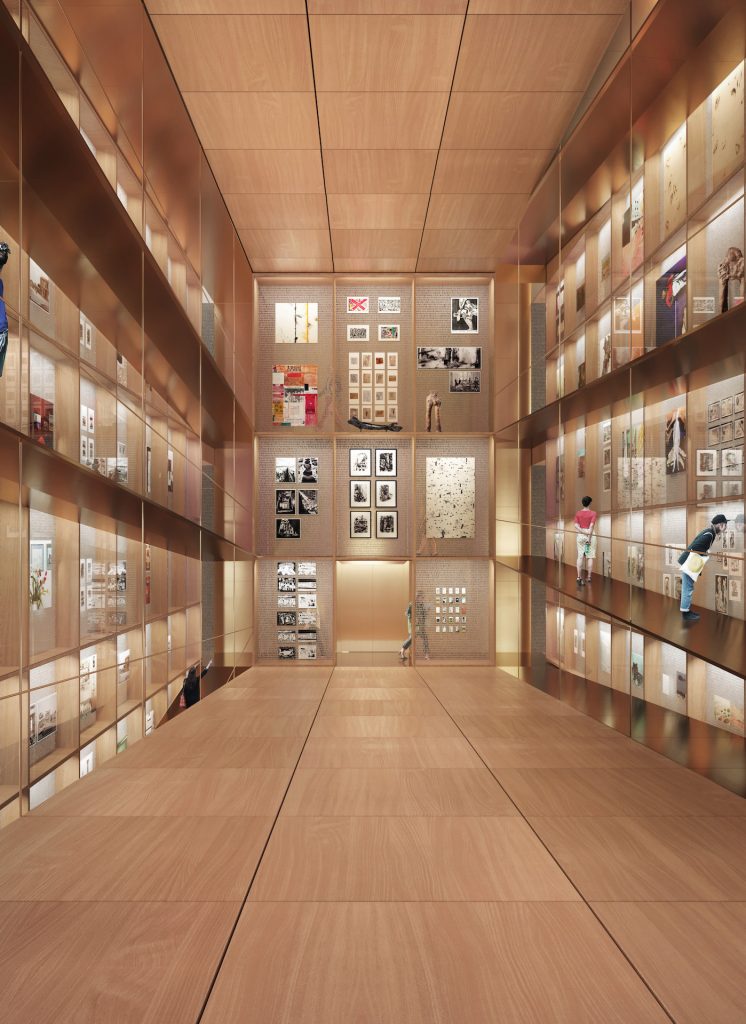
Interior hall view of Saradar Collection Open Storage, Mar Shaaya, Lebanon. Photo © Lina Ghotmeh—Architecture.
And it appears there is. While I am not suggesting these architects think alike, they do align around certain fundamentals. They share a passionate belief in the museum as a cultural and architectural typology, and a no less urgent desire for rethinking and renewal. “To be indispensable,” said a designer of many cultural buildings, “the museum cannot be seen as a luxury, but rather as a common necessity.” However, to stay relevant today, this architect added, “they have to embrace autocriticism and irony.”
“If museum architecture doesn’t evolve,” another warned, “the museum as a building type will become irrelevant.”
The architects I spoke with are determined to break down the museum’s conventional formality, hierarchy, and impermeability. They share a remarkably consistent belief in “porous,” “transparent,” “inclusive,” and “open structures”—a “museum without boundaries.”
They wish to see “more of a continuum between inside and outside” and to perforate the borders separating the exhibiting and social functions of the museum. They are looking to activate in-between “gray spaces” or “grey zones,” including parks and green spaces, as well as “pocket spaces” inside the buildings, to provide loosely defined, multidimensional spheres of learning, congregation, reflection, and relaxation. They see the museum as a “third space,” a site where everyday life happens but that is neither work nor home. They propose a “fluid” architecture that allows art to suffuse the whole museum, and life to flow unimpeded through its solemn spaces.
In the eyes of these architects, museums should be able to mutate “from one shape to another,” moving past “the idea that a museum is a monofunctional building.” Echoing recent shifts in museological thinking, the architects imagine the museum as a performative space where the visitors—the actors on the stage, so to speak—are empowered to take control of the action. Several spoke of handing over more “agency” to visitors, releasing them from heavy curatorial intermediation so they can chart their own journeys through the building. “Flexibility” may be the word I heard most often in my summer of conversations.
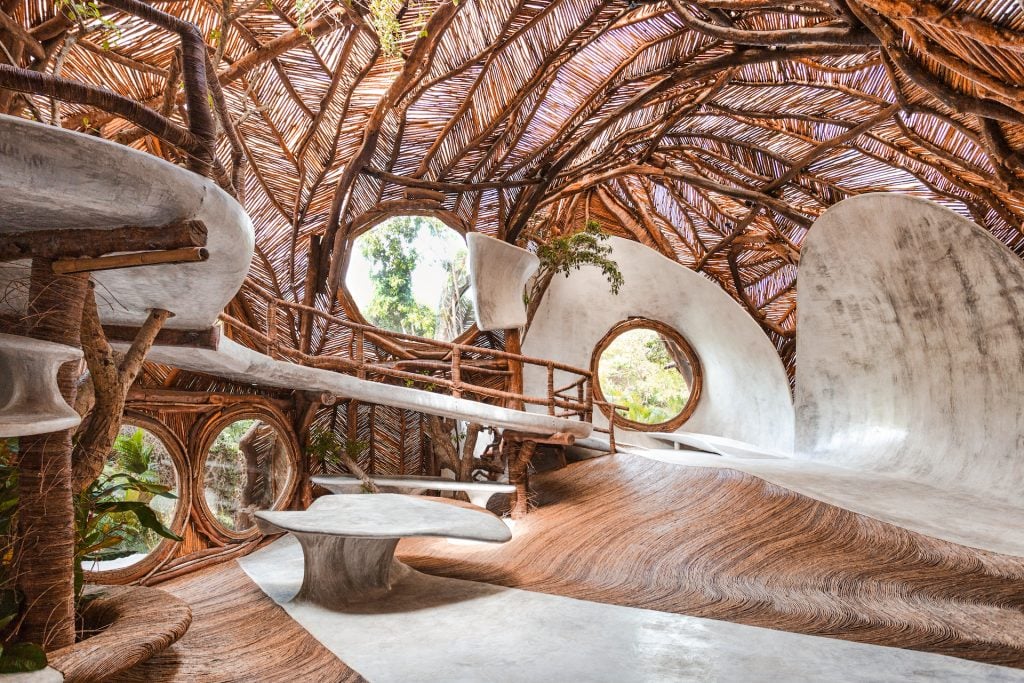
Roth Architecture’s SFER IK – Uh May, Francisco Uh May, Mexico. Roth Productions
These architects see museums as “spaces of encounter” that are devoted to sharing knowledge, while being “very intimate” and also “serious fun.” They describe the museum as a “truly civic space,” a piece of “cultural and communal infrastructure” that engages people with art and ideas, yet also allows them every now and then to “slow down and focus” to opt out of the relentless “distraction and fast pace” of modern life.
In this kind of museum, “everything is sensitized, visually and aurally.” Enhanced experience, however, is not achieved through an “austerity and neutrality of the spaces.” The white-walled gallery, a legacy of the mid-20th century, is not the answer. “Exhibiting art does not necessitate white cubes,” noted one of my conversation partners, articulating a surprisingly common view. It is “too pristine,” too controlled and confining. The whole museum experience “could be decentralized,” not just within the individual museum building, but in relation to the community, with the museum projecting itself outward “with satellites across the entire city.”
The architects know that we are in the midst of a transitional phase for museums, when institutions of all kinds are questioned. They are mindful that museums must align with the current “historical moment of revisioning of the Western narrative and the colonial narrative”—a generational shift with profound consequences for both the software and the hardware of the institution. They recognize, too, that museums, as civic structures, must stand in the vanguard of climate action. The entire sector needs to be future-proofed. Taken to heart, climate awareness involves tamping down museums’ seemingly insatiable appetite for new construction.
“Putting up a building is not the way forward,” one of them declared. A generation’s priorities are revealed in the words of the architect who said, “We need to think of the architecture of the future always in relation to nature.”
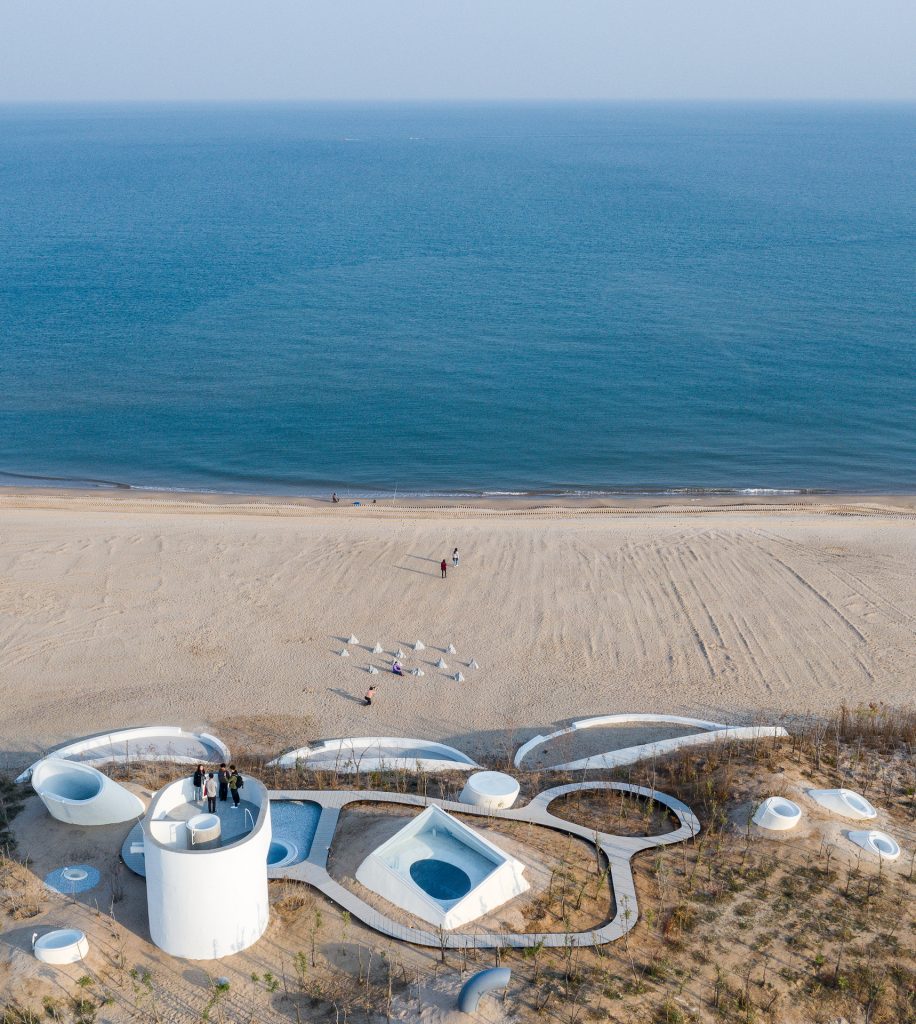
Aerial view of UCCA Dune Art Museum, Qinhuangdao, China. Photo by Wu Qingshan.
One vexing realization for architects is that permanent structures may not make much sense in an unstable future world. Cultural entities will need to “outlast their current functions.” We cannot know what kind of museum will fit the future. I heard about some startlingly original concepts, from buildings that can customize spaces in real time to adapt to artworks; to museums in which living rural customs, such as tofu-making, become the exhibited content; to cultural spaces harmonized with natural sites, including caves; to digitally outfitted structures in which the type of museum on view can be changed at the flip of a switch with a remote system update.
Today’s architects are certainly being drawn into a conversation about what a museum will look like in a fully digital society. “All institutions are contending with the repercussions of the internet age,” said one, “which has completely challenged the singularity of authority, and correspondingly forced architecture to rethink how the stage is set for a believable engagement between experts and citizens.” Will a future in which digital artifacts predominate even allow for, let alone demand, physical places to assemble and display physical objects?
How far will tomorrow’s digital museums deviate from today’s physical ones?
Despite the formidable uncertainties confronting the museum, the architects are
sanguine about its prospects—so long as it can adapt. They believe architecture can be a catalyst in this transformation. “We can make sure that museums are pioneers, part of the avant-garde,” said one. “Not just the artistic avant-garde, but the social avant-garde.”
To avoid any misunderstanding, none of the architects I talked with was suggesting the museum should become some kind of anodyne community space. No one is proposing to kick the objects to the corner and abandon the museum’s edifying and research functions, turning it into funhouse entertainment. A great deal about the future museum will remain constant out of necessity.
“A room full of paintings of the Dutch Golden Age or French Impressionists is unlikely to change much,” said one architect. “You will always need walls to hang them on, and spaces of contemplation in which you can admire them.”
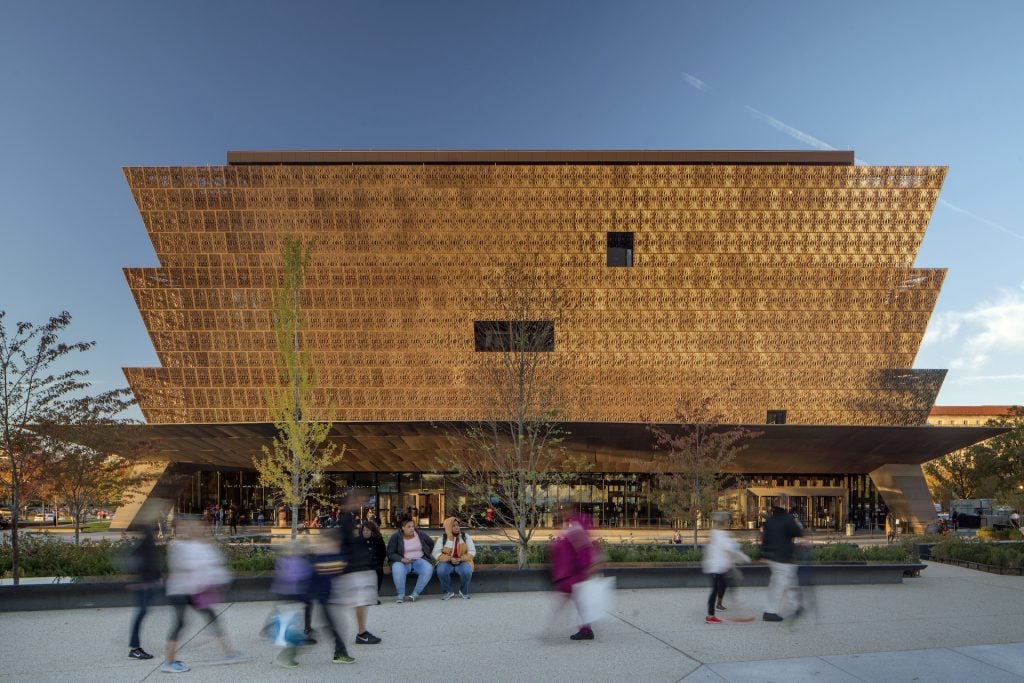
David Adjaye-designed National Museum of African American History and Culture, Washington, D.C. Photo © Nic Lehoux.
What the architects do espouse is an upgrade, an evolution. They seek a step forward that continues to deliver the expert knowledge and meaningful experiences museums uniquely provide, but that also removes visible and invisible barriers to entry, in order to bring these cherished institutions more into synch with life as it is lived now.
At the core of this line of thinking is a simple notion: that the museum belongs to all of us – an idea reinforced by the International Council of Museums’s definition of the museum, adopted last year, which on its very first line declares the museums to be an “institution in the service of society.” One can only hope that, even in today’s highly polarized public life, there can be a space—in the abstract and the physical senses of the word—for people of all beliefs and from all walks of life to come together.
Architects are tasked with translating these ideals into tangible, functional, practical form. But architecture alone—contending as it must with legacy structures, demanding clients, and the physical constraints of sites and materials—cannot coax out the full capacities of institutions. And a museum should never be confused with its building—it is so much more. What architecture can do is help museums get closer to achieving their potential.
We thus come full circle, back to the software coursing through these buildings. The
truth of the matter is that a great museum can function in a mediocre building, but no
amount of architecture will make a great museum out of one lacking strong art or a
thoughtful program. Adapting to an ever-changing society, the museum building, like the museum itself, will always remain in a state of construction. If architecture can be a partner and guide on this journey, it will have served its purpose well.
This is an edited and abbreviated version of the introduction to András Szántó’s just-released Imagining the Future Museum: 21 Dialogues with Architects (HatjeCantz).
A U.S. launch for the book will take place at the Brooklyn Museum on February 15 (6:15 p.m.) including a roundtable conversation between the author and three architects in the book: Elizabeth Diller (Diller Scofidio + Renfro, United States) and on Zoom by Paula Zasnicoff Cardoso (Arquitetos Associados, Brazil), and Kerstin Thompson (Kerstin Thompson Architects, Australia).